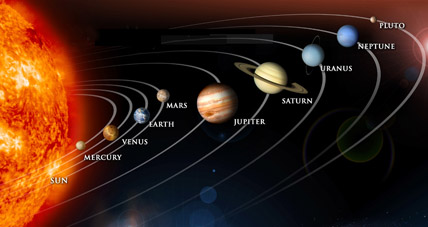Hello! This week in class we have studied the Universe and we have learnt that:
The Universe is everything, without exceptions. Matter, energy, space and time, everything that exists is part of the Universe. It is very big, but not infinite.
The Big
Bang
Most
astronomers believe the Universe began in a Big Bang about 14 billion years
ago. At that time, the entire Universe was inside a bubble that was thousands
of times smaller than a pinhead. It was hotter and denser than anything we can
imagine.
Then it suddenly
exploded. The Universe that we know was born. Time, space and matter all began
with the Big Bang. In a fraction of a second, the Universe grew from smaller
than a single atom to bigger than a galaxy. And it kept on growing at a
fantastic rate. It is still expanding today.
As the Universe expanded and cooled, energy changed into particles of
matter and antimatter. These two opposite types of particles largely destroyed
each other. But some matter survived. More stable particles called protons and
neutrons started to form when the Universe was one second old.
Over the next three minutes, the temperature dropped below 1 billion
degrees Celsius. It was now cool enough for the protons and neutrons to come
together, forming hydrogen and helium nuclei.
After 300 000 years, the Universe had cooled to about 3000 degrees.
Atomic nuclei could finally capture electrons to form atoms. The Universe
filled with clouds of hydrogen and helium gas.
The
Solar System and its planets
The Solar
System is made up of the Sun and all of the smaller objects that move around
it. Apart from the Sun, the largest members of the Solar System are the eight major planets. Nearest the
Sun are four fairly small, rocky planets - Mercury,
Venus, Earth and Mars.
Beyond Mars
is the asteroid belt – a region populated by millions of rocky objects. These
are left-overs from the formation of the planets, 4.5 billion years ago.
On the far
side of the asteroid belt are the four gas giants - Jupiter, Saturn, Uranus and Neptune. These planets are much bigger
than Earth, but very lightweight for their size. They are mostly made of
hydrogen and helium.
Until
recently, the furthest known planet was an icy world called Pluto. However,
Pluto is dwarfed by Earth’s Moon and many astronomers think it is too small to
be called a true planet.
An object
named Eris, which is at least as big as Pluto, was discovered very far from the
Sun in 2005. More than 1,000 icy worlds such as Eris have been discovered
beyond Pluto in recent years. These are called Kuiper Belt Objects. In 2006,
the International Astronomical Union decided that Pluto and Eris must be
classed as “dwarf planets”.
Even
further out are the comets of the Oort Cloud. These are so far away that they
are invisible in even the largest telescopes. Every so often one of these
comets is disturbed and heads towards the Sun. It then becomes visible in the night sky.
Furthermore we have seen this video in class, and we think thtat it is interesting, so we want sharing with all of you!
Group 3

No hay comentarios:
Publicar un comentario